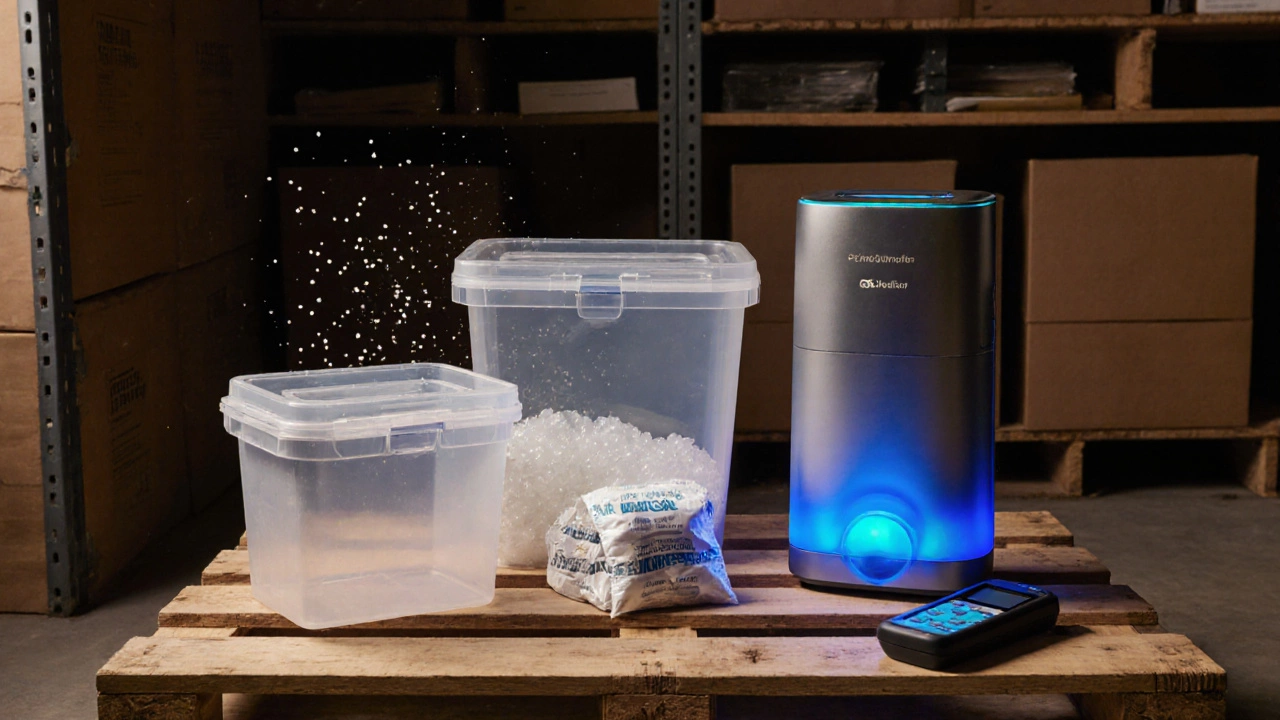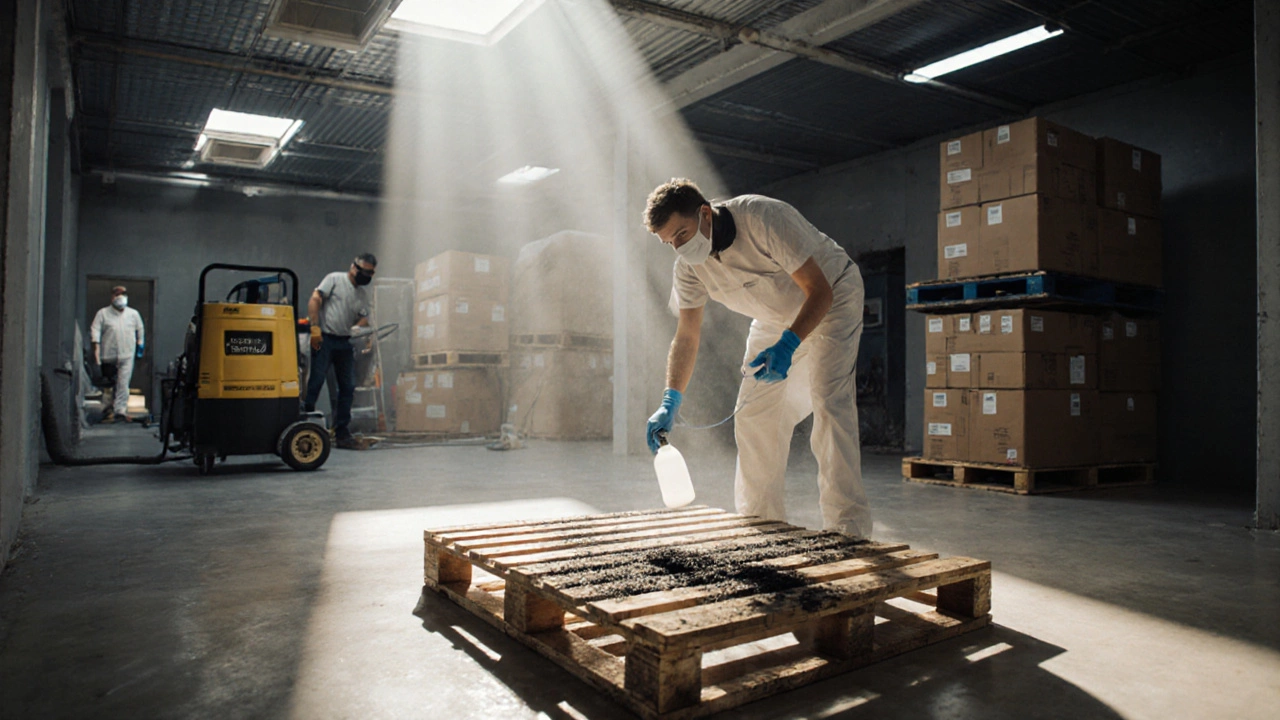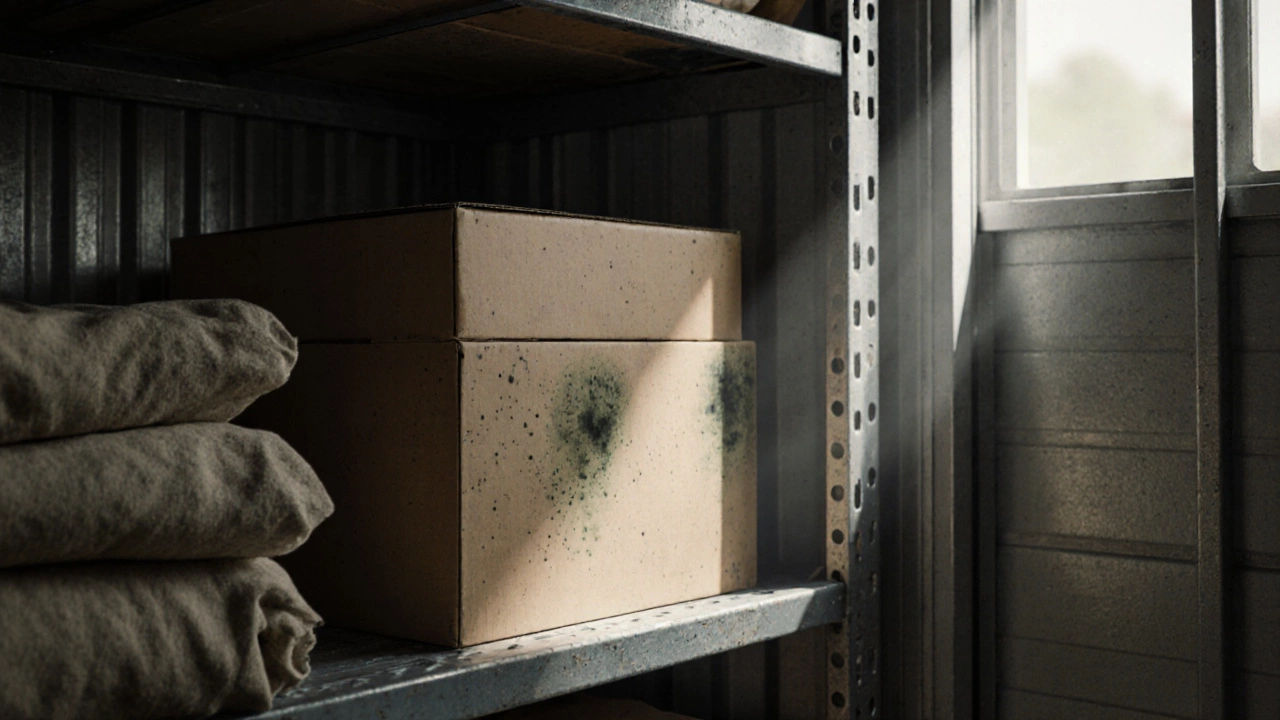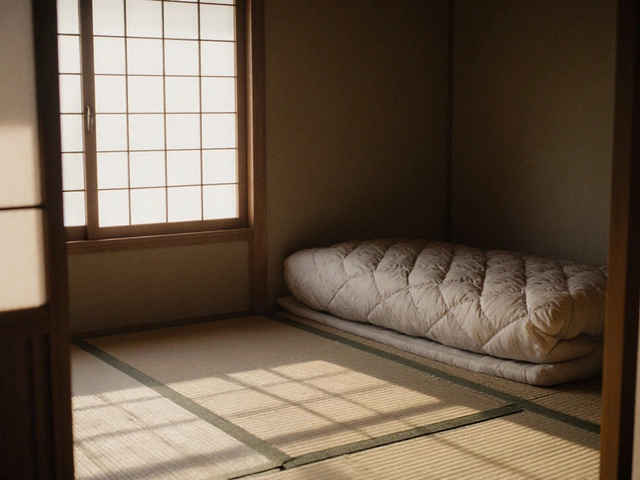Storage Unit Mold Risk Calculator
Calculate Your Mold Risk
Risk Assessment Results
Can mold grow in storage units? If you’ve ever wondered why boxes develop a musty smell or why fabrics feel damp after a season, the answer is yes-mold can thrive in storage spaces. Below you’ll learn why it happens, how to spot it early, and practical steps to keep your stuff safe.
Key Takeaways
- Moisture, poor ventilation, and temperature fluctuations are the three main drivers of mold in storage units.
- Use airtight containers, silica‑gel packs, and a portable dehumidifier to control humidity.
- Check for visible signs (black spots, musty odor) and use a moisture meter for hidden problems.
- Act quickly: remove affected items, clean with a mild bleach solution, and contact a professional if the spread is extensive.
- Most storage facilities in humid regions like Mississauga offer climate‑controlled units; choose them whenever possible.
What is Mold and Why Does It Care About Storage Units?
When water molecules linger on a surface, they become a food source for Mold is a fungus that reproduces via spores and thrives in damp environments. In a storage unit, the spores are already present in the air; they simply need the right conditions to multiply.
Three Conditions That Invite Mold
- Moisture: Leaking roofs, groundwater seepage, or condensation from temperature swings deposit water on walls, floors, and cardboard boxes.
- Humidity: Air that stays above 60% relative humidity keeps surfaces damp for longer periods.
- Poor Ventilation: Without fresh air circulating, moisture can’t evaporate, creating a stagnant micro‑climate perfect for fungus.
These factors often overlap in older facilities that lack modern climate control.

Common Types of Mold Found in Storage Units
| Type | Appearance | Health Risk | Where It Shows Up |
|---|---|---|---|
| Stachybotrys is a black‑green, slimy mold known as "toxic black mold" | Black or dark green, shiny | Respiratory irritation, chronic coughing | Cardboard, paper, damp wood |
| Cladosporium is a common outdoor mold that easily moves indoors | Olive‑brown, powdery | Allergy symptoms, sneezing | Fabric, curtains, seams |
| Penicillium is a blue‑green mold that spreads quickly on food residues | Blue‑green, velvety | Allergies, occasional asthma flare‑ups | Food items, cardboard boxes with spilled liquids |
How to Detect Early Mold Growth
Spotting mold before it spreads saves money and prevents health headaches. Follow this quick checklist:
- Sniff for a musty or earthy odor - it’s often the first clue.
- Inspect walls, floor panels, and the backs of boxes for dark spots or discoloration.
- Use a Moisture Meter is a handheld device that measures the percent of water content in materials on wood pallets or cardboard; readings above 15% indicate a problem.
- Check for condensation on metal doors or windows after the unit’s temperature changes.
Practical Prevention Strategies
Preventing mold isn’t about buying expensive equipment; it’s about controlling the three conditions listed above.
- Choose Climate‑Controlled Units: Facilities that keep humidity below 55% and temperature steady (around 68-72°F) dramatically cut mold risk.
- Seal Items in Airtight Containers: Plastic bins with lock‑tight lids block moisture and spores. Avoid cardboard whenever possible.
- Use Desiccants: Place Silica Gel Packs is drying agents that absorb ambient moisture on shelves; replace them every 2-3 months.
- Run a Portable Dehumidifier (if the facility allows): A small unit that removes 20‑30pints per day keeps relative humidity in check, especially in rainy months.
- Elevate Items Off the Floor: Use pallets or shelving; moisture tends to rise from the ground.
- Ventilate Properly: If the unit has vents, keep them unobstructed. For non‑vented units, open the door for a few minutes on dry days to let fresh air circulate.

What to Do If You Find Mold
Act fast to limit damage:
- Isolate the affected items. Move them to a well‑ventilated area.
- Wear gloves and a mask. Mix one part bleach with three parts water and spray the visible mold. Let it sit for 10 minutes, then wipe clean.
- For porous materials (cardboard, fabric) that are heavily colonized, it’s safer to discard them.
- Contact the storage facility’s management. Many offer Mold Remediation is a professional service that removes mold and treats surfaces to prevent regrowth services or can arrange a specialist.
- Document the issue with photos and written notes. This helps with insurance claims if property damage is extensive.
Seasonal and Regional Factors in Mississauga
Mississauga’s climate is humid in summer (average RH≈70%) and can be wet in spring. Those months are prime time for mold spikes. Winter heating can create condensation on cold walls, especially in older units without proper insulation. Plan a quarterly inspection schedule: once after the spring thaw, once in midsummer, once after the fall rains, and once in late winter.
Frequently Asked Questions
Can mold grow on metal shelves?
Metal itself doesn’t feed mold, but if condensation forms on the surface, the water can drip onto nearby items and create a damp environment where mold can develop.
Do climate‑controlled units guarantee no mold?
They hugely reduce risk by keeping humidity low, but leaks or improper packaging can still cause localized mold. Regular checks are still recommended.
Is bleach safe for all storage items?
Bleach works on hard, non‑porous surfaces. It can discolor fabrics and damage wood finishes, so test a small hidden area first or use a milder vinegar solution for delicate items.
How many silica‑gel packs do I need per 10ft²?
A rule of thumb is one 20‑gram pack for every 10ft² of shelf space, replaced every 2-3 months in humid climates.
Can I store food in a regular storage unit safely?
Only if the unit is climate‑controlled and you use airtight containers. Even then, perishable items should be kept in refrigeration rather than a storage unit.
Next Steps for a Mold‑Free Storage Experience
1. Choose a climate‑controlled unit or verify the facility’s humidity controls. 2. Pack belongings in sealed plastic bins, add silica‑gel packs, and stack on pallets. 3. Set a reminder to inspect the unit every three months, using a moisture meter for hidden spots. 4. If any mold appears, follow the cleaning steps or call a professional remediation service right away. 5. Keep a record of humidity readings and any maintenance actions; it’s useful for insurance or future moves.
By staying proactive-monitoring moisture, improving airflow, and using the right storage accessories-you can keep your belongings safe from mold’s slow, silent damage.







